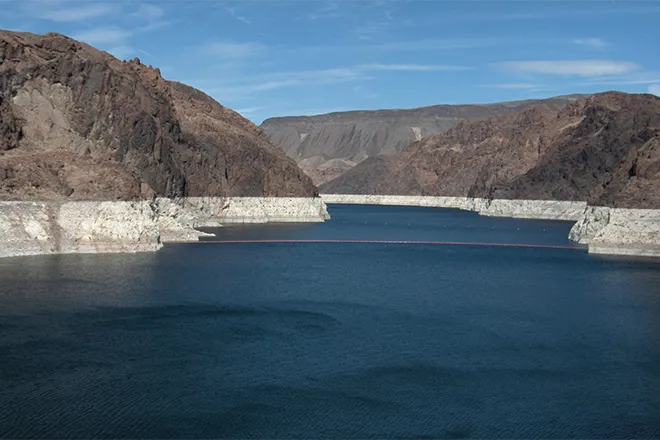
After $100 million Huntington Beach denial, what's the future of desalination in California?
(The Center Square) – After a high profile, decades-long battle to build a desalination plant in Huntington Beach ended in denial, all eyes will be on the California Coastal Commission as it considers whether to approve two smaller desalination projects this fall.
Commissioners are tentatively scheduled to consider the Doheny Ocean Desalination project in October. The project, based in Orange County, could produce up to 5 million gallons of potable water per day, according to the project’s environmental impact report. The project is expected to cost $140 million, and $32.4 million in grants have been secured thus far, Southern California Water District Public Information Specialist Sheena Johnson said.
The commission could also consider another desalination project in water-starved Monterey County in the coming months. The Monterey Peninsula Water Supply Project would produce up to 6.4 million gallons of water per day and is estimated to cost around $322 million.
The commission’s unanimous denial of the Huntington Beach Desalination Project in May calls into question the approval of future desalination projects. Poseidon Water, the company behind the project, sunk $100 million of its own funds to see the project through.
If approved by the Coastal Commission, the Doheny and Monterey projects would be added to the state’s catalog of a dozen desalination facilities previously approved by the commission.
Josh Stratton, manager of external affairs for California American Water, the Monterey desalination project applicant, said in an email that they are working on completing the project application and “go before the Coastal Commission at the appropriate time.” Stratton said the project would provide a “drought-proof water supply” as the region faces state-mandated limits on pumping from the Carmel River.
“Monterey peninsula residents need a sustainable water supply that includes stormwater capture, recycling and desalination,” Stratton said. “Beyond our service area it’s clear that folks are ready to move beyond the status quo, so that the Peninsula can move towards meeting its new housing needs and supporting the hospitality and tourism industry upon which many in the region depend.”
The commission’s denial of the $1.4 billion seawater desalination plant in Huntington Beach cited concerns about the impact on ocean habitat, the cost to operate the plant and its location along an earthquake fault zone. The project could have produced up to 50 million gallons of water per day.
Despite having the support of Gov. Gavin Newsom and dozens of state lawmakers, the project faced strong opposition from environmental groups, who feared the project would harm marine habitats and impact the environment.
Still, commissioners say the future of desalination in California remains bright and will receive support from the commission so long as projects “comply with the law.”
“Desalination is and will continue to be part of our current and future water portfolio, as this historic drought continues to worsen,” Coastal Commission Executive Director Jack Ainsworth said in a statement.
California is currently in its third year of drought, with 99.8 percent of the state experiencing “moderate” to “exceptional” drought, according to the US Drought Monitor. In April, state water officials announced that the snowpack was at 38 percent of average, representing just how severe the drought truly is. In May, officials adopted a ban on the irrigation of grass outside of commercial and institutional properties and required water suppliers to enact restrictions in preparation for a shortage of up to 20 percent.
As the drought continues, supporters of desalination say the process could be key to improving the state’s water resiliency in the future. CalDesal advocates for desalination plants in the state. Executive Director Glenn Farrel said that embracing conservation efforts were enough to combat the drought in the past, but it’s time to embrace a method that is “immune to snowpack levels and dry years.”
“Signing off on these projects [Doheny and Monterey] would demonstrate with no ambiguity that seawater desalination, a proven water resource technology relied upon around the world to combat the effects of climate change and drought, has a future in California,” Farrel said. “California has exhausted the easy and simple solutions to climate change.”
A typical concern surrounding desalination, particularly among environmentalists, is the potential impact on marine life and the environment.
This was a chief concern among environmental advocates when the commission was considering the Huntington Beach project. Surfrider, an organization dedicated to ocean protection, opposed the project over concerns about the impact on marine life and potential environmental hazards.
The organization said that it is not against ocean desalination as a whole.
“Surfrider does not oppose ocean desalination: in places that have already maximized conservation, water recycling and water use efficiency; when the plants are sized for actual need; when sea level rise projections are considered; and when projects are designed to have the least environmental impacts possible,” Surfrider Foundation’s Senior Environmental Director Zach Plopper said. “We have to carefully consider all of our infrastructure decisions to make sure they don’t exacerbate the climate crisis, harm beaches and marine life, or negatively impact frontline communities.”
















